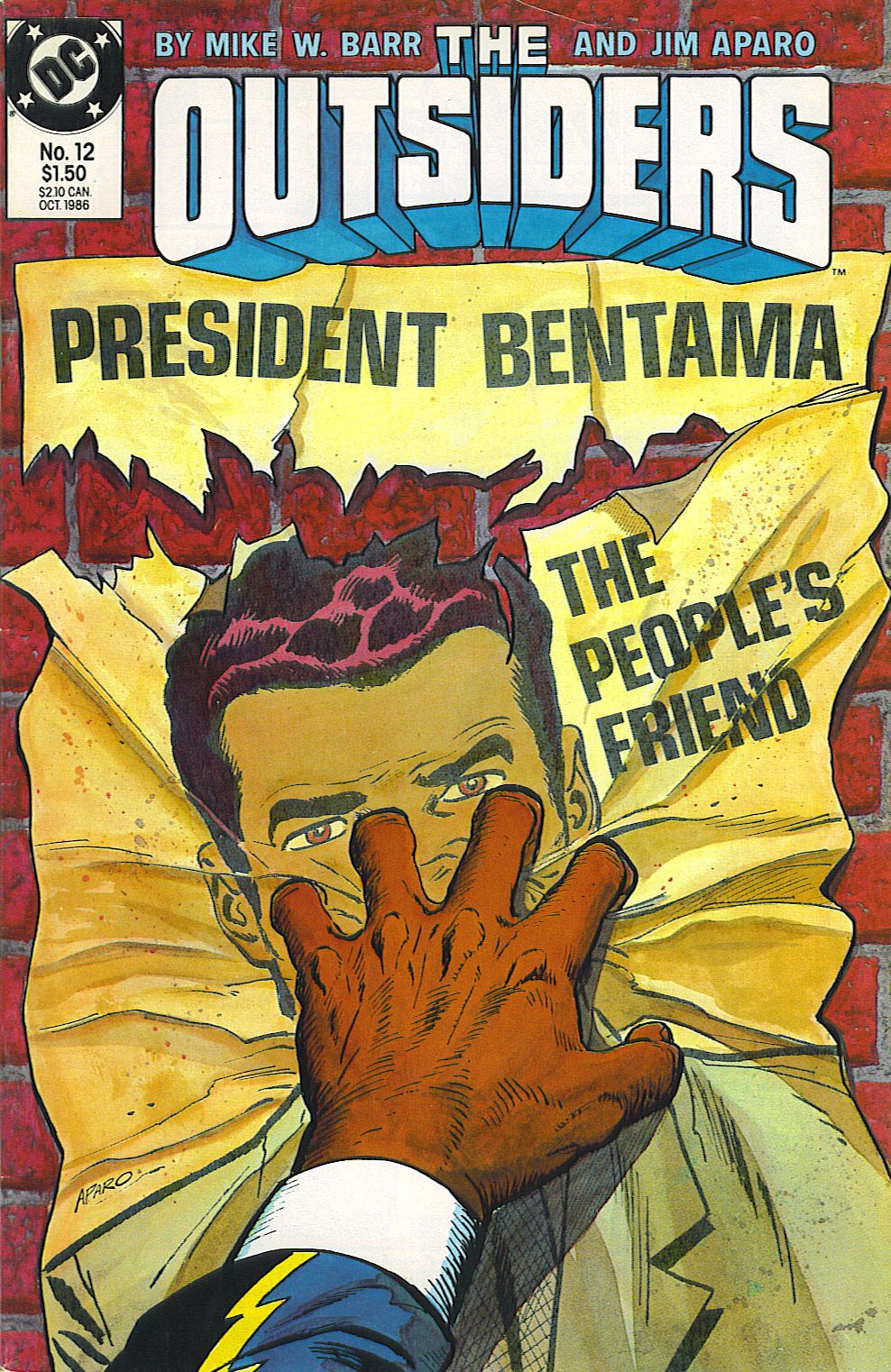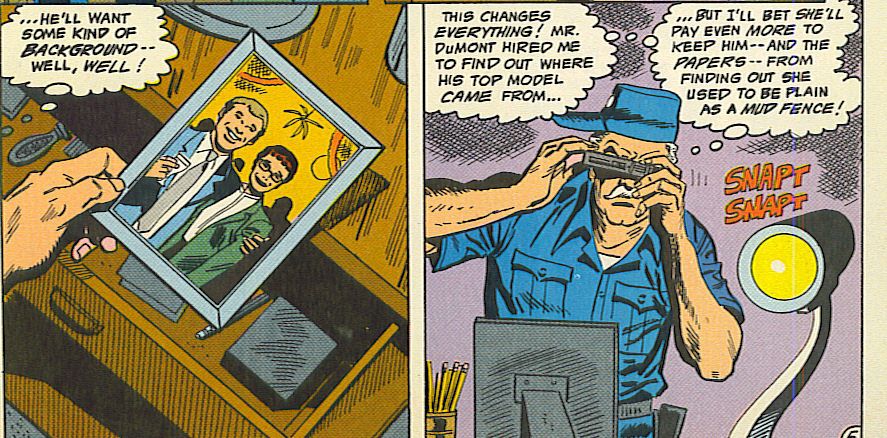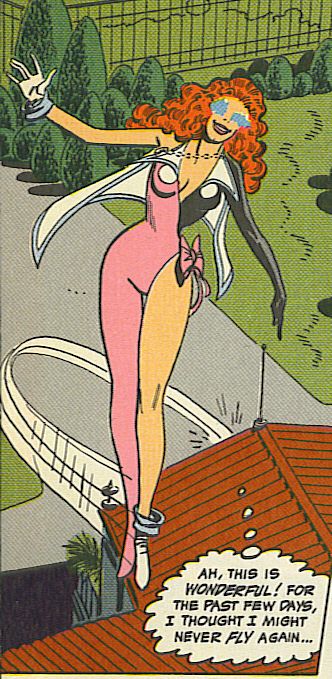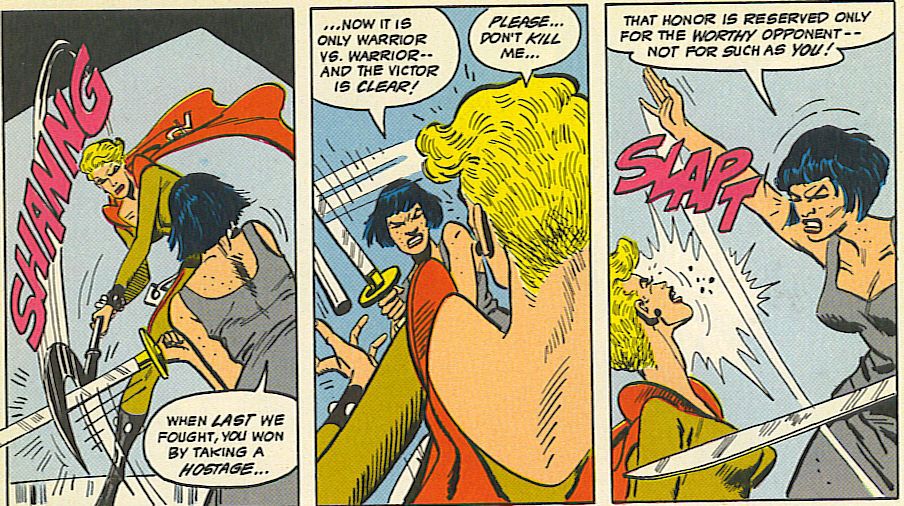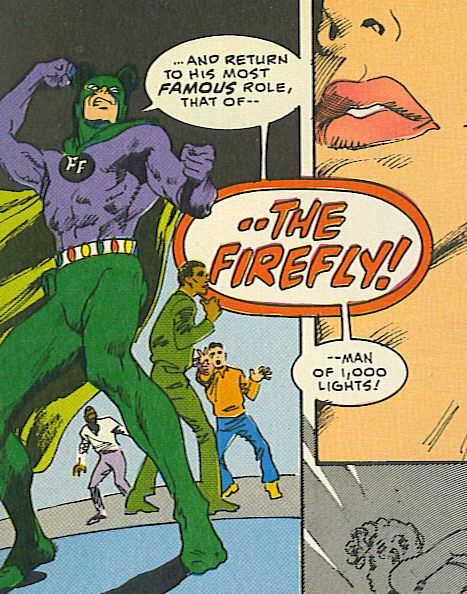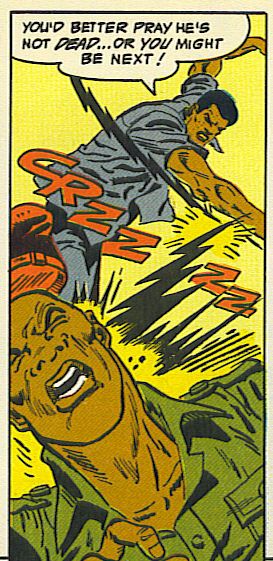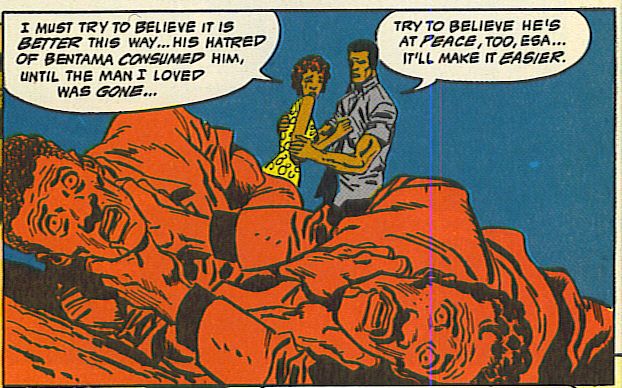In the spirit of John Seavey's Punk Comics Manifesto (which I don't agree totally with, but I do think it's a neat idea), I thought I would review one comic book every weekend. Now, this might not seem like much to you, but I also decided on some ground rules:
I would go to the comic book shoppe and buy a book pretty much at random. I would simply stop at one of the boxes, close my eyes, and pull something out. Whatever I pulled out would be the only book I would read and review. Unless ...
I had read it before. Then I would put it back and try again (or if it happened to be Action Comics #1 and I didn't have $100,000 lying around). I wanted something I had never read. Because ...
I want to review these books as if I am a first-time comic book reader. Granted, I can't be completely ignorant of what happens in the comics, because I will probably have at least a passing knowledge of the characters and I know how to read a comic book (something which, interestingly enough, is NOT an innate skill). But I want to read these books and see how well the talent brings us into the story without indulging in pages and pages of recaps, and if we are able to follow what's going on if, in fact, this is the first comic book we have ever picked up. I just want to see how accessible comics are to a neophyte. Call me silly, if you will. It's my blog! (Okay, it's not. I beg your forgiveness, Oh Dread Lord and Master!)
So, my first comic is ... (drum roll, please) ... The Outsiders #12 from October 1986, written by Mike W. Barr and drawn (and lettered) by Jim Aparo. Whoo-hoo!
Let's check this bad bear out. The first page shows a bunch of superpowered Russians breaking into a family's home in some fictional country in Africa (Mozambia) and the head Russian (a burly blond guy with a hammer) shouting, "Where is Black Lightning?" As this is the 1980s, we can surmise that the Russians are the bad guys (their lack of politeness is another clue), therefore Black Lightning is the good guy. Easy so far. The president, Edward Bentama, follows them in, with a manservant named Jonathan and a redhead named Lia. Lia appears to be on Bentama's side, but he obviously doesn't trust her, and in a thought balloon, we learn that she is probably on the good guys' side. Black Lightning, meanwhile, in on the ledge outside the apartment. If this is the measure of the thoroughness of the bad guys, I'm surprised they ever accomplish anything. He climbs to the roof and meets with Akubo, a revolutionary, who is wheelchair-bound and filled with hatred for Bentama. Nothing will satisfy him except "his death," which doesn't bode well.
So far, so good. Black Lightning is an Outsider, and Lia appears to be one as well. Bentama and Jonathan are bad guys with Russian muscle. The scene shifts to a mine, where the other Outsiders are captives and forced to work. The blonde woman is Halo, but the others remain nameless. Then the scene shifts again, to a subplot. A man breaks into Lia's house and finds out she was once "plain as a mud fence," in his words. This is something that we never return to in this issue. Obviously it gets resolved later.
Back in Africa, Black Lightning sneaks into the mine and finds his teammate, a redheaded man. This man gives us the name of the other Outsider who was captured - Katana - and also says he doesn't know what happened to Metamorpho. Black Lightning tells him there's a revolt coming, and they both hope that Lia is on their side, even though she seems to be collaborating with Bentama. Lia, who is wearing an implant designed to control her powers, gets Jonathan to remove it. We learn, through a flashback panel, that she planted a subconscious command in Jonathan when they made her use her "will-warping powers" on "Rex," who is apparently Metamorpho. She breaks out and goes to find Bentama to punish him.
At the mine, things begin to move fast. The rebels attack, and Black Lightning joins in, after the guards shoot an old man who had worked their for years. The workers rise up, and the fight is on! Bentama orders a man in a dark suit to get his Russians to stop the Outsiders, but the man flees the scene. The good guys and the bad guys get it on, Katana frees Rex, and everyone fights a Russian. Akubo shows up and manages, from his wheelchair (we see that he's legless), to grab Bentama's throat. A few panels later they both lie in the dust, dead, with their hands on each others' throats. Oh, the cycle of violence! As they are leaving a newly-free Mozambia, the man in the dark suit shoots them down. "Continued next issue?" is the last thing we see, underneath the plane exploding on the ground.
There's a back-up story with Lia and Gaby (Halo) in which Lia is at a fashion show and some bad guy steals all the color from the clothes. He's called Firefly, and sports a quite ridiculous costume. He is stopped when various models pummel him with makeup, allowing Halo and Looker (which is Lia's superhero name) to regroup after their initial confusion and give him a good beat-down. It's silly fun.
The interesting thing about this issue is that Barr does a very nice job making sure we know who everyone is and what their powers are. Except for Geo-Force, who is never named and does very little in the fight, everyone calls everyone else both by their real names and their superhero names. The bad guys are bit more poorly defined, as we see only one of "The People's Heroes" use their powers, and that's Pravda, who fires rings of energy that have no effect on Looker. I had no problem following the characters and figuring out who was who. Granted, I already knew who they were, but someone with no idea who any of them were could figure out that Black Lightning throws, well, black lightning bolts, Looker controls the wills of people, Metamorpho is some kind of elemental guy, Halo has some funky light powers, Katana apparently fights real good with a sword (that's two members named after what they do, which is kind of weird), and Geo-Force ... well, as I said, we're not sure what he does, or even what he's called. Poor Geo-Force!
The problem with this issue for the neophyte is we have no idea what the Ousiders are doing in Mozambia. It's the final issue of a storyline, after all, and we dive right in. Why are they there? What is Bentama's big crime? Sure, he's a jerk, but lots of world leaders are jerks. How did he capture the Outsiders in the first place? How and why did Lia convince him that she switched sides? In the subplot, why is Lia's employer so concerned about her past? It's all very vexing, and points out that even though Barr does a decent job with the characters, a new reader might be put out by the lack of explanation for all this. Perhaps ditching the even dumber back-up story and adding a bit more exposition might have helped. It was interesting to see Garfield Lynns before Chuck Dixon and Graham Nolan at least made him a better character if not a decent threat to Batman in the pages of Detective, but that doesn't mean his "crime" should be in this book.
As a regular comics reader, this isn't a very good book. It's dull, paint-by-numbers superhero stuff. I like Barr generally, but he doesn't do much with this revolution, which could have been an interesting story. And Aparo, of whom I've never been a fan, should not ink his own work, because it's far too ... static, I guess the word would be. He has always, it seems, had a problem with implying motion in his work, because his people look awkward when they're supposed to be in motion, but occasionally the right inker can make his work look less stiff. When he inks it himself, it ain't no good.
So that's The Outsiders #12. A rather forgettable ending to what is probably a forgettable story, redeemed only by the fact that Looker plays a pretty big role (I love Looker). If you were a comics neophyte back in 1986, you might have been able to figure things out easily, but there's no reason for you to come back.
Oh, and at the end of the book there's an advertisement for this thing called Watchmen. Looked pretty cool. I wonder how that worked out? Anyone know?


